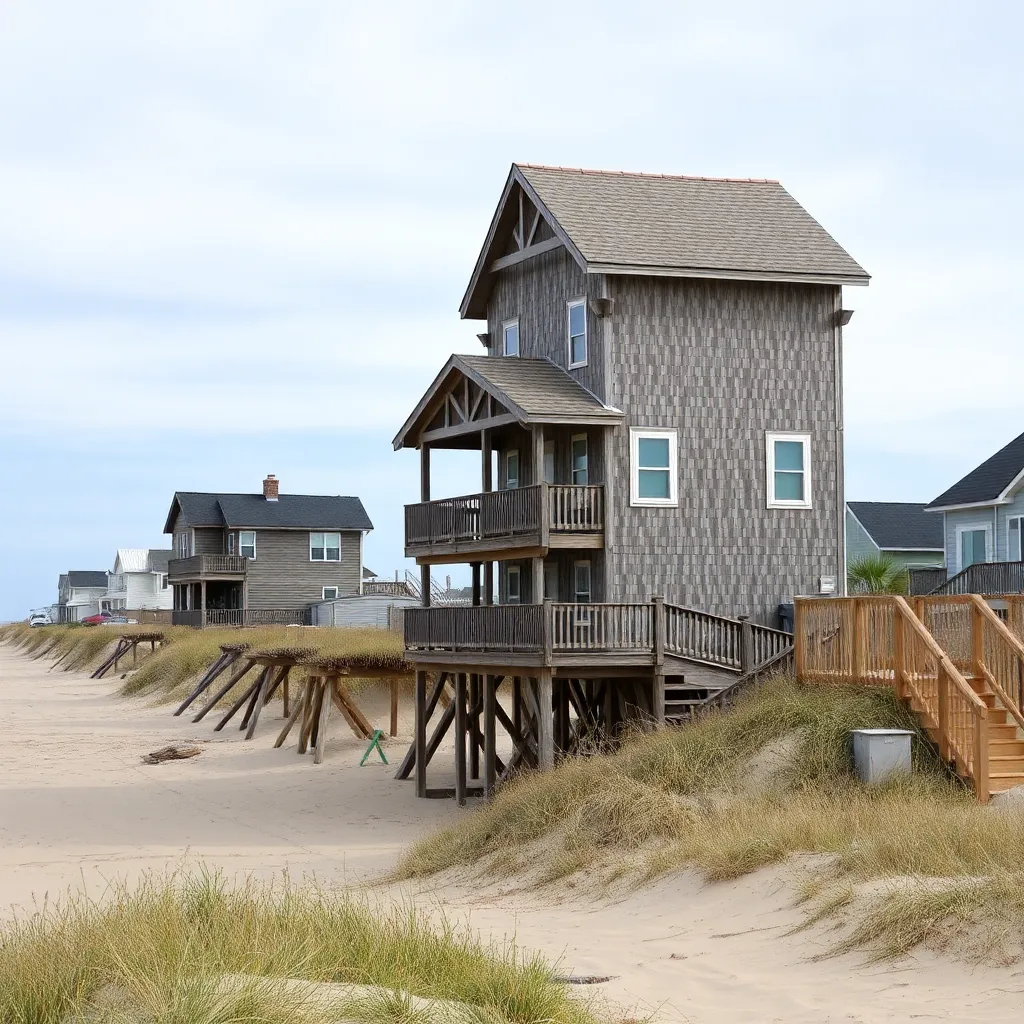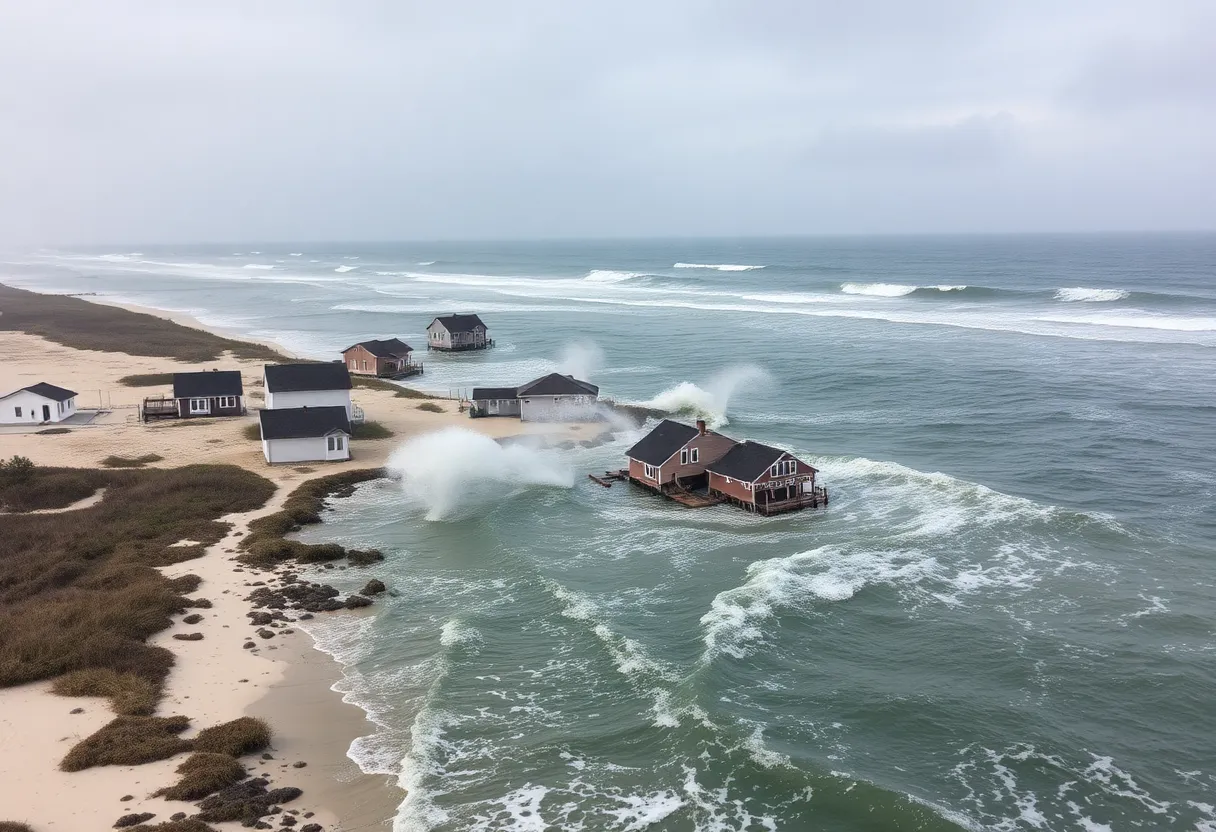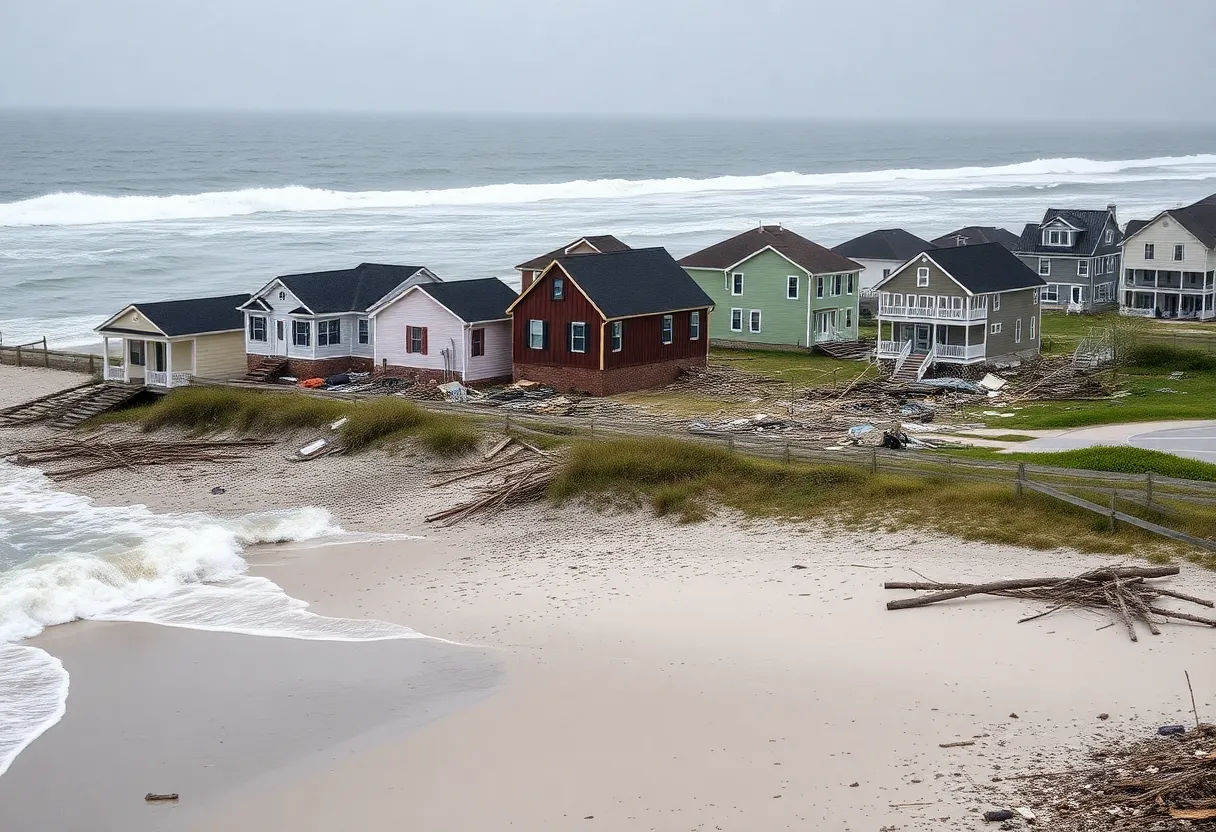Rodanthe, North Carolina: A Community Grapples with Coastal Erosion
In the quaint village of Rodanthe, located on the stunning Outer Banks of North Carolina, residents are learning to live with an ongoing, heartbreaking situation. Since 2020, at least ten houses have succumbed to the unforgiving Atlantic Ocean, and this week, the problem has intensified. Just last Tuesday afternoon, a beloved home known as “Front Row Seats” faltered as its wooden pilings cracked and succumbed to the waves.
A Slow-Motion Catastrophe
This collapse is part of a larger issue that has been unfolding over decades. The beachfront homes, once practically untouchable, are now on the front lines of a significant and growing threat: beach erosion exacerbated by climate change. David Hallac, the superintendent of the Cape Hatteras National Seashore, highlighted the alarming reality, stating that erosion rates can reach up to 15 feet per year in certain areas. It’s a creeping challenge that’s often overlooked compared to sudden disasters like hurricanes.
Rodanthe, home to approximately 200 people, represents more than just a collection of vacation homes. It’s a community steeped in history and natural beauty, situated on a fragile barrier island. Experts warn that this region was never an ideal location for construction. The sand dunes shift and change due to ocean forces, sometimes resulting in entire homes being engulfed by the sea.
Homes Built on Shifting Sands
In previous decades, homeowners had a better understanding of the dynamic nature of these barrier islands. Many would proactively move their houses as the encroaching surf began to become a concern. However, as Hallac points out, that knowledge seems to have faded, leading to a series of precarious situations where homes are now right on the edge of the ocean.
The erosion is not just a problem for Rodanthe but affects much of Hatteras Island, which has seen significant land loss over the years. A striking example is the historic Cape Hatteras Lighthouse, which was originally a staggering 1,500 feet from the shore when built in 1870. Just about 50 years later, it stood a mere 300 feet away from the water’s edge, forcing relocations to safeguard the landmark.
The Ripple Effect
The reality of these collapses extends beyond just the loss of property. A single home falling into the ocean can scatter debris up to fifteen miles along the coast, posing risks to beachgoers and the environment. Health hazards arise from potential contamination, especially concerning septic tank systems from these homes.
North Carolina’s coastal development regulations, established in the 1970s when the risk seemed less dire, were aimed at keeping homes safe from the rising tide. But many of these properties were built well within the parameters of those regulations. Today, that coastline has receded drastically, and the challenges of increased storm intensity and frequency loom large.
Searching for Solutions
Local officials are now in a race against time, grappling with the question of how to safeguard their community from the impending threat of erosion. Reports estimate that nearly 750 of 8,800 oceanfront properties in the state are at risk, a staggering figure that highlights the urgent need for action.
Possible solutions range from beach replenishment, where sand is dredged and transported to eroding shorelines—potentially costing $40 million for Rodanthe alone—to relocating or demolishing homes. However, these options present significant financial challenges for a small town struggling to maintain its identity amidst such changing landscapes.
The federal government, recognizing the severity of this situation, is considering measures to provide flood insurance dollars to help with home relocations or demolitions. U.S. officials are pushing for legislation that acknowledges the realities faced by coastal communities like Rodanthe.
A National Concern
Rodanthe’s plight reflects a larger story being told up and down the coast and even across the United States. As sea levels rise and coastal erosion accelerates, residents and officials alike face a crucial junction—the need for viable and sustainable solutions to an ongoing and escalating crisis. Braxton Davis, the executive director of the North Carolina Coastal Federation, puts it succinctly: “This is a national issue.”
As Rodanthe reflects on its circumstances, it serves as a poignant reminder of nature’s power and the importance of community resilience in the face of change.

Author: STAFF HERE OUTER BANKS WRITER
The OBX STAFF WRITER represents the experienced team at HEREOBX.com, your go-to source for actionable local news and information in the Outer Banks, Dare County, and beyond. Specializing in "news you can use," we cover essential topics like product reviews for personal and business needs, local business directories, politics, real estate trends, neighborhood insights, and state news affecting the area—with deep expertise drawn from years of dedicated reporting and strong community input, including local press releases and business updates. We deliver top reporting on high-value events such as the Outer Banks Seafood Festival, NC VIP Fishing Tournament, and NCBBA Red Drum Tournament. Our coverage extends to key organizations like the Outer Banks Chamber of Commerce and Outer Banks Community Foundation, plus leading businesses in tourism, retail, and hospitality that power the local economy such as Kitty Hawk Kites, Outer Banks Mall, and Avon Fishing Pier. As part of the broader HERE network, including HEREAsheville.com, HERECharlotte.com, HEREGreensboro.com, and HERERaleigh.com, we provide comprehensive, credible insights into North Carolina's dynamic landscape.





